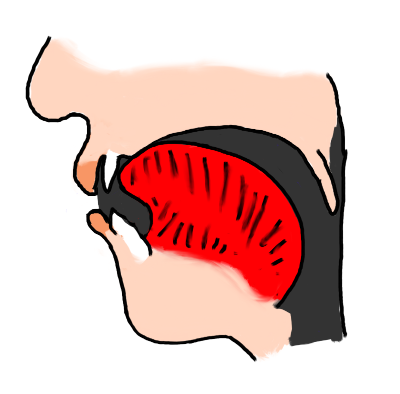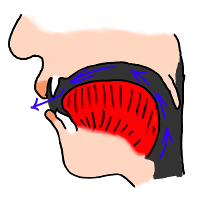How to pronounce timide
Do you find the information below useful? If you do, you can get guides like it for 1,000+ French words by downloading this app for your iPhone or iPad.
| t |  | The French 't' is pronounced like an English 't' after a 'th' sound (as in "with two"). Your tongue touches the back of the teeth. Also try to avoid a "strong burst of air" (aspiration) as in English. If you are a native English speaker, repeat the word "tool" then "stool" with your hand in front of your mouth. In "tool", you'll feel a stronger burst of air than in "stool". In French, pronounce the 't' as in English "stool", without the strong burst of air. | In this particular case, before a 'i' vowel, a French 't' sound may actually be pronounced with some aspiration. |
| i |  | The French 'i' vowel is pronounced with the tongue almost as far forward and close to the roof of the mouth as it will go and with the lips spread. Aim to "tense" your lips for a moment as you pronounce it. | |
| m |  | The French 'm' sound is pronounced in a similar way to English 'm'. Just remember that the letter "m" at the end of a word or before another consonant doesn't represent an 'm' sound as such in French, but rather that the previous vowel is nasalized. | |
| i |  | The French 'i' vowel is pronounced with the tongue almost as far forward and close to the roof of the mouth as it will go and with the lips spread. Aim to "tense" your lips for a moment as you pronounce it. | |
| d |  | A French 'd' sound is pronounced like an English 'd' after a 'th' sound (as in "with Dave"): the tongue touches the back of the teeth. An addition, as with French 'b' and 'g', make your vocal cords vibrate right through the 'd' sound by "trying to force some extra air out" even though your tongue is blocking it. | |
| ə |  | The 'schwa' or 'neutral e' is pronounced with the tongue in a "central, relaxed" position and the mouth also in a 'half open, relaxed' position. Note that many French speakers actually tend to pronounce this vowel as a 'close eu' vowel (as occurs at the end of words ending in -euse), or at least with some rounding of the lips. | Even though the word ends in -e in the spelling, notice how in the pronunciation, this vowel isn't "fully" pronounced. Instead, the syllable before it receives the stress. |